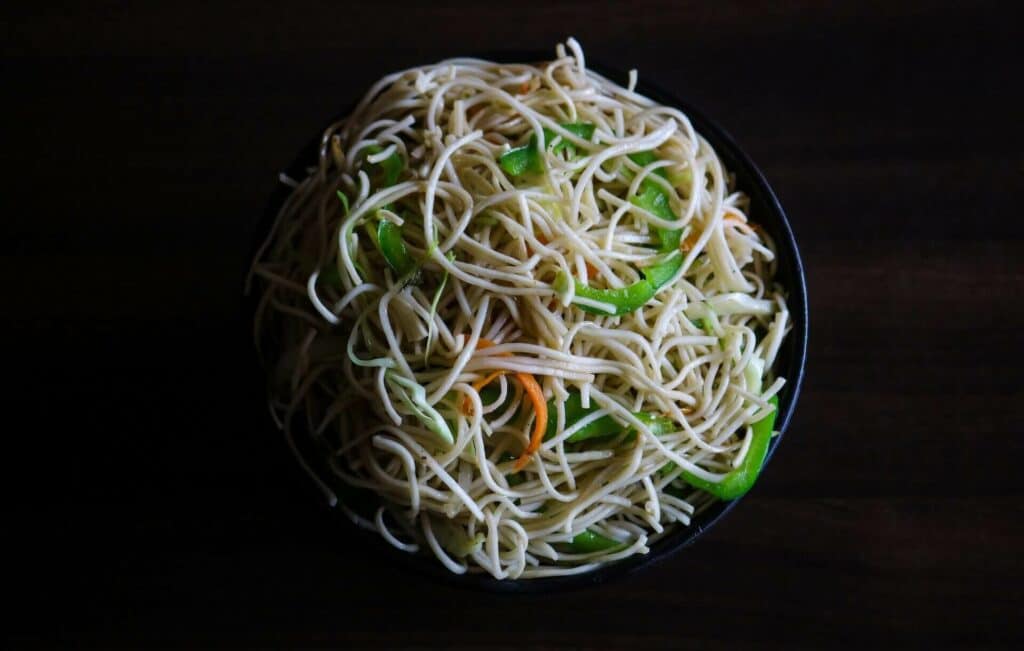If you like eating at your local Thai restaurants or ordering Thai food, you have probably seen that almost all menus have ramen dishes. Moreover, if you have tried them, we are willing to bet that they have all been pleasant surprises. Hence, it is natural to wonder – “Is ramen Thai?”.
From a historical point of view, ramen is a traditional Japanese dish. However, there is no denying that noodles play an important role in the entire Asian cuisine, and ramen is certainly one of the most popular recipes with noodles across the world. Hence, Thai cuisine has drawn a lot of inspiration from this famous Japanese recipe and made its own unique ramen dishes.


Ramen Is a Traditional Japanese Dish, Not Thai
Ramen recipes are present in almost every Thai restaurant or fast food chain, so it is easily mistaken for a Thai dish. However, that is not the case. The origins of ramen are hard to pinpoint, but there is no denying that the dish we eat today has been perfected and popularized by the Japanese. The issue is that noodles were invented by the Chinese, and according to the majority of historians, Chinese immigrants who were settling in Yokohama Chinatown brought the first recipes, which then gave inspiration for ramen. Indeed, it is a debatable topic, but there is no denying that classic Japanese recipes like Shoyu, Tonkotsu, or Miso ramen have made this dish worldwide famous.
All Japanese Recipes Have Some Common Characteristics
Traditional Japanese ramen is a true delicacy and a hearty meal. Unfortunately, the Western world has gotten used to eating instant ramen like Maruchan, which cannot be compared to the authentic recipe. Whether you are eating Tonkotsu ramen or some other, they will all have the following characteristics in common:
- Traditional ramen noodles are exclusively made from the following ingredients: warm water, baked baking soda, and wheat flour. Of course, there are all kinds of shapes and sizes, but the key feature is wheat flour. If you use any other type of flour, they can’t be considered traditional anymore.
- Broth is probably the most prominent feature of authentic Japanese ramen. It is well known that in order to achieve the viscous consistency, the broth has to be cooked for about twelve hours in order for all ingredients to completely dissolve and impart their flavors.
- Two traditional Japanese toppings are soft-boiled egg (the yolk mixes with the broth and adds even more flavor and consistency) and slices of Japanese braised pork belly (called “Chashu”). Of course, there are many variations, and all sorts of vegetables are usually added as additional toppings.
- When it comes to seasonings, there is a wide range of flavors, from the mildest to the hottest. However, ramen in Japan is usually somewhere in the middle, it is well seasoned with salt and pepper, and for more specific flavors, ingredients like miso paste are added. Extremely spicy ramen is uncommon.
Nonetheless, Thailand Has Some Interesting Ramen Recipes
If you like to make your ramen spicy, then Thai recipes will not disappoint you. Thai cuisine, in general, uses a lot of spicy seasonings, and their ramen recipes are, of course, no different. Moreover, Thai chefs put much more effort into ingredients and spices, which is not the case with the Japanese, who value broth the most (although Thai broth is unique in its own way). Another major difference is the fact that Thai ramen is made with rice noodles and not wheat.
The most famous Thai dish that uses rice noodles and resembles ramen closely is Ramen Pad Thai (recipe further in the text). According to many reports, it is one of the first ramen-like dishes in Thailand, invented somewhere around seventy years ago. Since then, it has become a national delicacy and one of the most popular street foods. However, other recipes have been created by Thai chefs in the meantime, and nowadays, a lot of exciting recipes are available at Thai restaurants. Here are some of the most prominent Thai dishes.
| Ramen Pad Thai | Pad Thai is made with rice noodles, chili peppers, garlic and chili powder, tamarind juice, and fish oil. However, the main difference is that there is no broth. The noodles are fried with all the ingredients and seasonings, and one egg is added to the mix while preparing. Usually, there is an option to add seafood as a topping, and the most popular is dried shrimp. |
| Coconut Curry Ramen | This is one of the best examples of what we mean when we say that Thai ramen has its own unique ingredients and broth. The broth is made with red curry, chicken stock, and coconut water, a combination you will not find in Japan. The usual toppings are a soft-boiled egg and pork, which is pretty similar to the original recipes, but finally, a lot of chili and garlic powder are added. Hence, it is not a dish for people who dislike hot food. |
| Thai Chicken Ramen | Another recipe that demonstrates how culture can impact a traditional recipe. The main ingredients of this ramen recipe are chicken slices, mushrooms, and peanut butter. Finally, everything is sprinkled with lime juice and soy sauce. |
You Should Definitely Try Both Japanese and Thai Ramen if You Haven’t
One of the most important things that both cuisines share is the fact that food like ramen has, overall, a decent nutritional value. The traditional Japanese broth has a lot of calcium and potassium, while various spices in Thai ramen are natural antioxidants. However, above all, both ramen recipes are truly delectable dishes that could be a great choice for all three meals and break the monotony of your diet.